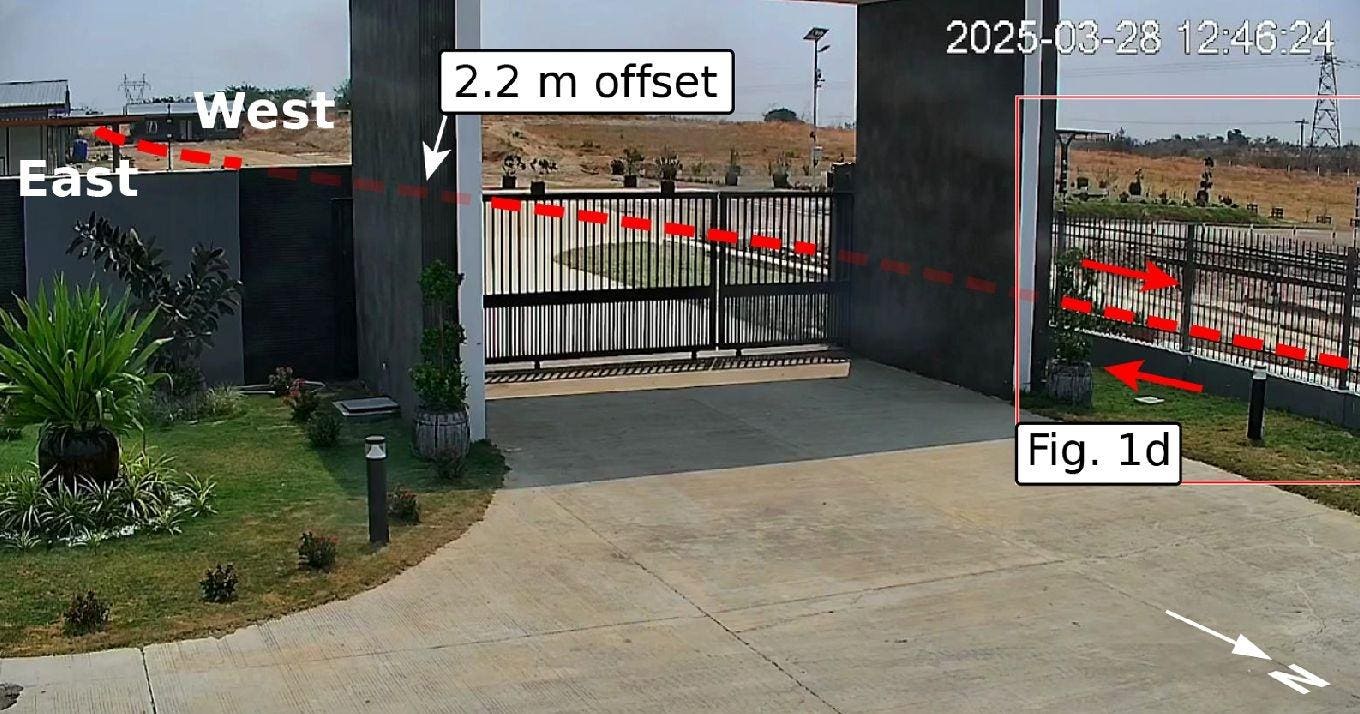Video showing shaking of the surface and at 0:16 a sudden offset as part of the ground moves (for … More
A video uploaded just a few days after a powerful earthquake hit Myanmar on March 28, 2025, quickly captured attention of the geological community, as it shows the exact moment the ground ruptures along a fault.
The video comes from a CCTV security camera recording along the trace of Myanmar’s Sagaing Fault, which ruptured in a magnitude 7.7 earthquake. The camera was placed about 20 meters to the east of the fault and was 120 kilometers away from the earthquake’s center.
When geophysicist Jesse Kearse and his colleague Yoshihiro Kaneko at Kyoto University analyzed the video more carefully, they noted that the video not only shows a fault in motion as never seen before — shaking followed by a visible slide of the ground — but reveled the dynamics of fault slip.
“I saw this on YouTube an hour or two after it was uploaded, and it sent chills down my spine straight away,” Kearse recalls. “It shows something that I think every earthquake scientist has been desperate to see, and it was just right there, so very exciting.”
Geological clues, like curved scrape marks on fault planes, already suggested that blocks of rock moving past each other during faulting rotate slightly , but until now there has been no visual proof for this geomechanical behavior.
“Instead of things moving straight across the video screen, they moved along a curved path that has a convexity downwards,” Kearse explains.
The researchers decided to track the movement of objects in the video by pixel cross correlation, frame by frame. The analysis helped them measure the rate and direction of fault motion during the earthquake.
They conclude that the fault slipped 2.5 meters for roughly 1.3 seconds, at a peak velocity of about 3.2 meters per second. This shows that the earthquake was pulse-like, which is a major discovery and confirms previous inferences made from seismic waveforms of other earthquakes. In addition, even if most of the fault motion is vertical (a classic strike-slip fault), the slip curves at first, then remains linear as the slip slows down. The pattern fits with what earthquake scientists had previously proposed, as the ground breaks first at the weakest point (in this case the surface) and then the rupturing fault follows.
The video confirmation can help researchers create better dynamic models of how faults rupture and how the energy of an earthquake spreads from its point of origin, Kearse and Kaneko conclude.
The full study, “Curved Fault Slip Captured by CCTV Video During the 2025 Mw 7.7 Myanmar Earthquake,” was published in the journal The Seismic Record and can be found online here.
Additional material and interviews provided by the Seismological Society of America.
